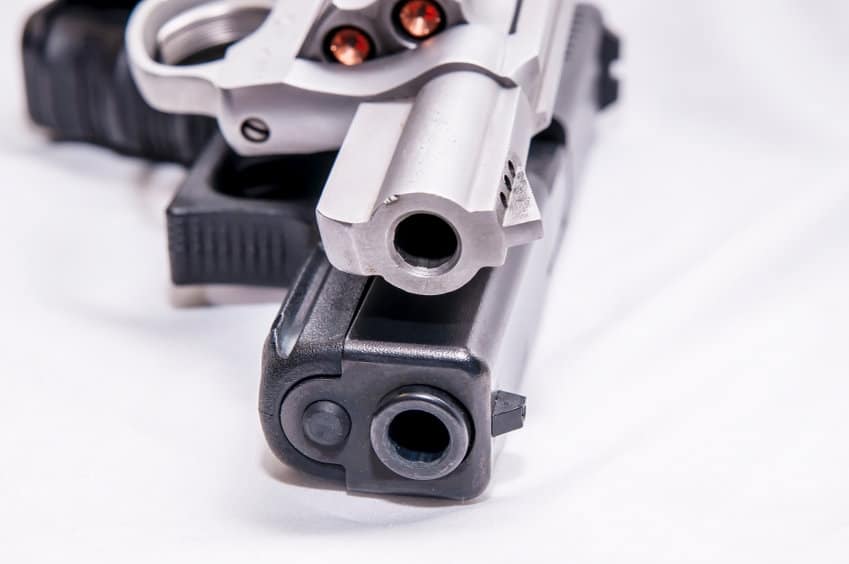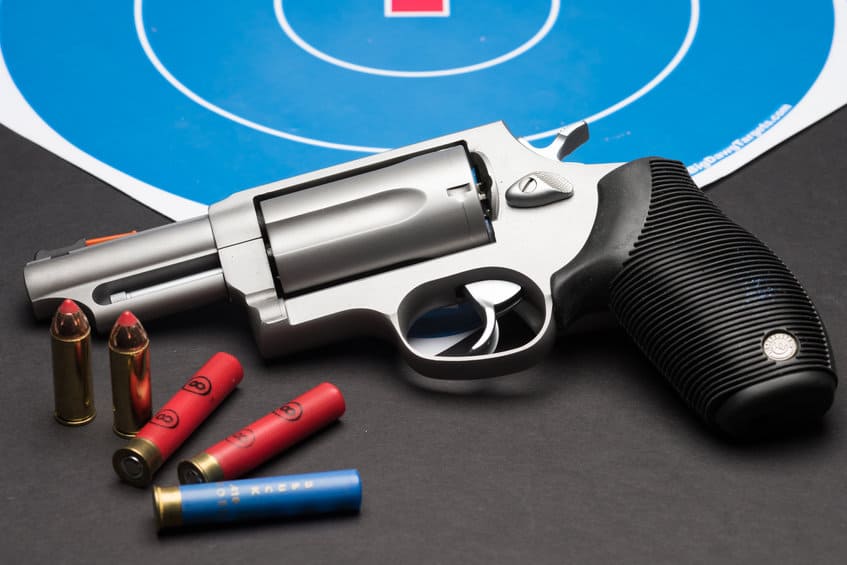The uncertainty and unrest of the last few years have prompted many people to buy a gun for protection in the home. If protection is why you are thinking about acquiring a firearm, then it is important to choose the right one. So, you may wonder, what is the best gun for home defense?
Let us look at some of the types available, their pros and cons, and I may make some specific recommendations based on observation or my personal preference.
The types of firearms that are useful for home defense are as varied as the homes they may be called upon to defend. The categories that we will discuss today are pistol caliber carbine, shotgun, handgun, and rifle. Each has advantages and disadvantages for home defense. Let’s dive in.
Table of Contents
Pistols
The most popular choice for a defensive weapon today, the handgun in its various forms can be stored almost anywhere and maneuvered in tight spaces without issue. The downside is that pistols require more practice and training for the user to become a tactically sound marksman than other weapons systems. Also, the more powerful the sidearm, the more practice is required to master the weapon.
If you are a first-time buyer, I recommend attending a training course at a local range. Some ranges have rental guns, allowing for a try-it-before-you-buy-it experience to find the handgun you are most comfortable shooting.
If asked for a recommendation, I will normally point the individual to a Glock 19 or similarly sized weapon like the Smith & Wesson Model 10 revolver. My reasoning is that the size of these weapons is about right for the hands of most people. With few controls to memorize these mid-size platforms are very controllable in the 9mm or .38 Special cartridges, so less practice is required to master the weapon.
Shotguns
Another frequent recommendation for home defense is the shotgun. The power and intimidation factor of a pump-action or double-barrel shotgun draws many to choose one as their primary defensive weapon, and few are disappointed. The drawbacks to a scattergun are the size, recoil, and limited ammunition capacity of the weapon. I prefer a regular stock on a shotgun and not a pistol grip only type. With nothing to steady against your shoulder, the pistol grip shotgun behaves like a large and unwieldy pistol, useful only at point-blank range.
Unlike the movies, a shotgun will not sweep a hallway clean, unless the hallway is a hundred yards long. At 12 feet (the width of my bedroom), 00 buckshot will only have a 2-inch diameter pattern from an open choked gun. Accuracy is still important to stay alive!
An advantage to the shotgun is that different types of ammunition can be used depending on the needs of the defender (or whatever ammo is available). Also, like the rifle and the carbine coming up on the list, the shotgun can pull double duty as a hunting arm for filling the freezer.
Rifles
Short, handy rifles like the AR-15 and AK platforms make exceptional home defense weapons. They allow precise shot placement, and unless you live in a state with magazine restrictions, ample capacity to handle any defensive task. If you live in a large open home I would give serious consideration to a compact semi-automatic rifle as a primary defensive arm. You don’t want to miss and put a round through the wrong wall.
Those in rural areas or others where large predators may pose a threat to your family or livestock will also appreciate the rifle for external defense of the home. The weapon need not be a semi-auto either. A lever-action deer rifle with a 20” barrel is a formidable defensive arm against all threats. If you need something shorter, then consider going through the paperwork to create a legal SBR (short barrel rifle), giving you the size benefits of a pistol with rifle power.
Carbines
Some may lump these in with rifles, but I am looking specifically at those chambered in pistol cartridges. The pistol caliber carbine (PCC) is not a new category of weapon, first seeing daylight in the 1860s with the Henry rifle. But the concept has been given new life with the PCC class in defensive shooting competitions.
What the PCC offers for home defense is a compact and controllable package. PCCs are chambered in decently powerful calibers that are shootable by many persons and can use the same defensive ammunition as your pistol. The typical PCC has a barrel length under 20 inches (usually 16 inches) and a detachable magazine.
A lever gun also fits here. Jeff Cooper called .357 and .44 Magnum lever-action carbines “Brooklyn Specials” since they could be owned with less hassle in areas where handguns and semi-auto rifles are restricted.
Popular choices in the PCC category are the Hi-Point Carbine, M1 Carbine, 9mm AR conversions, and the Kel-Tec Sub-2000.
The Hi-Point Carbine is very affordable, with an MSRP under $400 for all models and a street price of less than $300 for the 9mm variant. The Hi-Point is also available in .40 S&W, .45 ACP, and 10mm Automatic with magazine capacities ranging from 8 to 10 rounds depending on the caliber.
The Kel-Tec is also very affordable but somewhat harder to come by. Its primary benefits are that it can fold in half for storage and that Glock, Beretta, or S&W mags can work depending on the grip frame purchased.
The M1 Carbine is a battle-proven weapon but is also known to jam with worn magazines. 9mm Ars are very popular and reliable. They use a variety of magazines based on the conversion used and are very accurate.
Considerations
When having to fire a weapon inside the home, overpenetration is a concern. Standard defensive pistol ammunition should not go very far after exiting a threat but do your homework on the ammo you intend to use
Also, some individuals advocate the use of birdshot for defense, the claim being that the fine shot will not penetrate a home’s interior wall. This thinking is wrong. There are plenty of tests and anecdotal evidence to state otherwise. The bottom line is; use a heavy shell and don’t miss!
Conclusions
So, what is the best gun for home defense? The one you can operate with your senses dulled and still put rounds on target while under pressure. Practice handling and using your weapon until its feel and operation are as familiar to your hands as your cell phone. Remember what is behind the walls near where a confrontation may occur, and know your fields of fire.
If your significant other is also armed, rehearse how you both will handle events during an emergency (who calls 911, etc.) and practice room clearing drills and moving as a team. Practice makes perfect and gives peace of mind.




